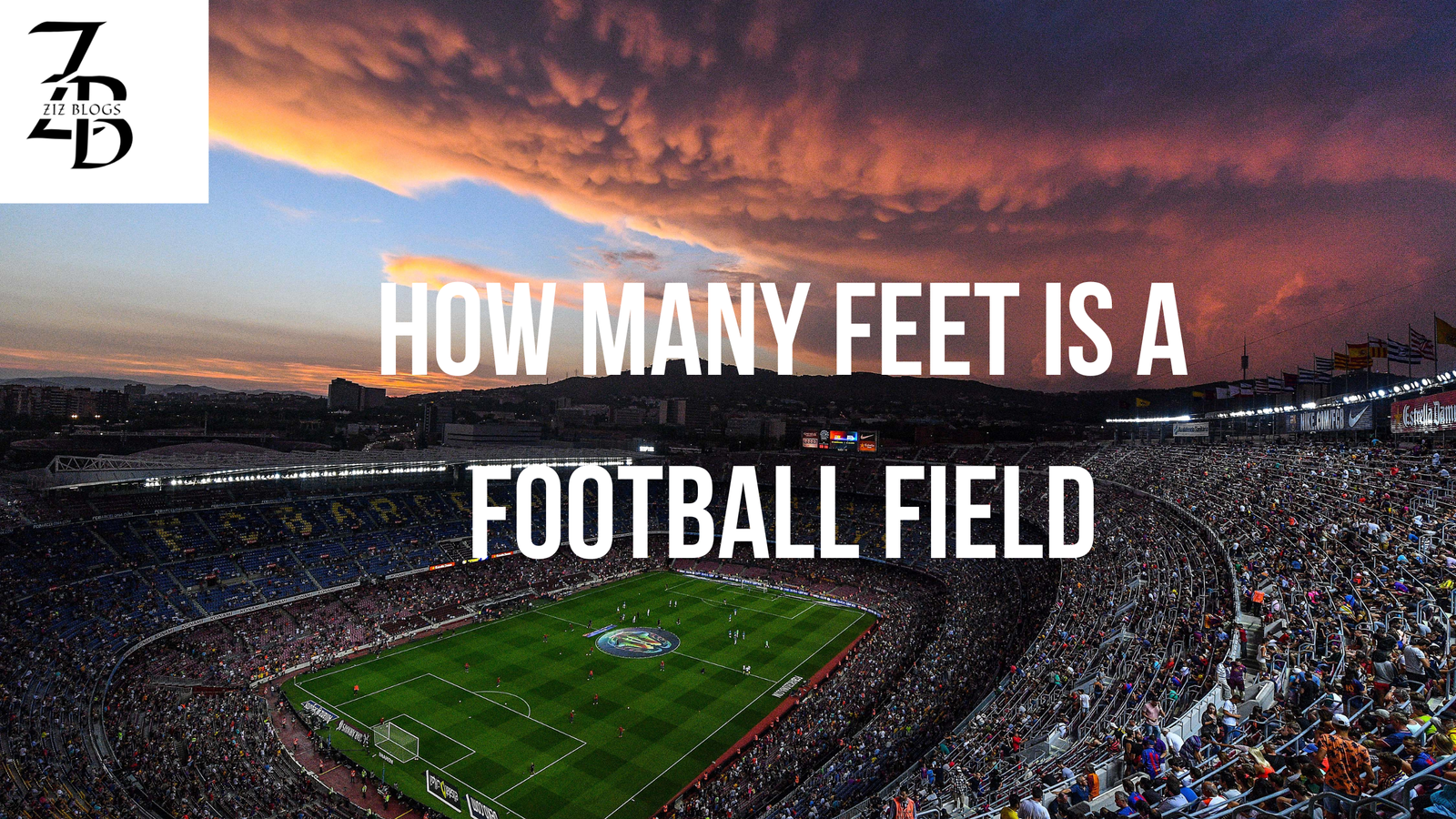How Many Feet is a Football Field?
“How many feet is a football field” pertains to the inquiry about the exact length of a football field, typically expressed in feet. This measurement holds significance in understanding the scale and dimensions of the playing surface used in American football.
Importance of knowing the length of a football field
Knowing the length of a football field is crucial for players, coaches, officials, and fans alike. It forms the foundation upon which the game is played and influences strategic decisions, player positioning, and game dynamics. Additionally, understanding the length of a football field contributes to the appreciation of the sport’s traditions, rules, and cultural significance. Whether on the field or in the stands, this knowledge enhances the overall experience of engaging with the game of football.
Understanding the Football Field
A football field is the stage upon which the drama of the game unfolds, a space meticulously designed for athletic prowess and strategic maneuvering. Let’s delve into the intricacies of this fundamental element of football.
Definition of a football field
The football field serves as the battleground where two teams clash in pursuit of victory. It is a rectangular expanse of grass or artificial turf, demarcated by distinct boundary lines and adorned with essential markings.
Components of a football field
Each component of the football field contributes to the dynamics of the game, shaping players’ movements and strategies.
End zones
End zones bookend the field, serving as the scoring areas where teams strive to penetrate their opponents’ defenses and cross the goal line.
Sidelines
The sidelines mark the perimeter of the playing area, delineating boundaries beyond which players cannot venture during gameplay. Coaches, spectators, and substitute players populate these sidelines, cheering or strategizing as the action unfolds.
Goal lines
Goal lines adorn the width of the field, defining the thresholds that teams must breach to secure points. Crossing the opponent’s goal line signifies a touchdown, a moment of triumph celebrated by players and fans alike.
Hash marks
Hash marks adorn the field at regular intervals, facilitating the placement of the football for various plays. These markings serve as reference points for referees, players, and coaches, ensuring precision in gameplay execution.
Standard dimensions of a football field
The standard dimensions of a football field are meticulously defined to ensure uniformity and fairness across all levels of play. In American football, the field is rectangular in shape, with specific measurements for both length and width.
The length of a football field is 100 yards, equivalent to 300 feet. This distance spans from one end zone to the other, encompassing the entire playing area where teams compete for touchdowns, field goals, and defensive stops.
The width of a football field is 53 1/3 yards, which translates to approximately 160 feet. This width accommodates the width of the field goal posts and provides ample space for players to execute plays along the sidelines.
These standardized dimensions serve as the framework for organizing games, designing stadiums, and regulating gameplay. They ensure consistency and fairness in competition, allowing teams to compete on a level playing field regardless of venue or level of play. Understanding these dimensions is essential for players, coaches, officials, and spectators to fully grasp the scale and scope of the game of football.
Measurement of a Football Field
The measurement of a football field is not merely a matter of length and width; it embodies the essence of the game’s structure and strategy.
Units used for measurement
The dimensions of a football field are typically expressed in yards, a unit deeply ingrained in the sport’s traditions and rules. This unit of measurement symbolizes the game’s heritage and evokes a sense of nostalgia for enthusiasts.
Calculation of the length of a football field
The length of a standard football field is 100 yards, encompassing the distance from one end zone to the other. This measurement forms the backbone of the game, dictating the strategic maneuvers and tactical decisions made by players and coaches.
Factors affecting the length
While the standard length of a football field remains constant, various factors can influence the perceived length during gameplay. Environmental conditions, such as weather and field conditions, can impact players’ speed and agility, altering the dynamics of the game. Additionally, the level of competition and the caliber of players can affect the pacing of the match, stretching or compressing the perceived length of the field.
Historical Perspective
Exploring the historical evolution of football field dimensions offers insights into the sport’s development and adaptation over time.
Evolution of football field dimensions
The dimensions of football fields have evolved alongside the sport itself, reflecting changes in rules, equipment, and playing styles. From the rudimentary fields of early football matches to the meticulously maintained arenas of modern stadiums, the journey traces the evolution of the sport’s infrastructure.
Influence of rules and regulations on field size
The regulation of football field dimensions has been shaped by governing bodies and sports associations seeking to standardize gameplay and ensure fairness. Rules regarding field size, goal dimensions, and playing surfaces have been refined over the years, guided by considerations of safety, accessibility, and competitive balance.
Applications and Implications
The length of a football field extends beyond the boundaries of the game, permeating various aspects of sports culture and society at large.
Relevance in sports
The dimensions of a football field serve as a benchmark for evaluating performance and comparing athletes across different contexts. Whether in professional leagues, amateur competitions, or recreational settings, the standardization of field dimensions facilitates meaningful comparisons and assessments of skill and athleticism.
Comparison with other sports fields
Comparing the dimensions of football fields with those of other sports offers insights into the unique characteristics and challenges of each game. From the sprawling expanse of a soccer pitch to the compact confines of a basketball court, the diversity of field sizes reflects the distinct demands and strategies inherent to each sport.
Practical uses outside of sports
Beyond the realm of athletics, the concept of field dimensions resonates in various domains, from urban planning to event management. The principles of space optimization, crowd management, and logistical planning applicable to sports fields find resonance in diverse contexts, shaping the way we interact with and utilize physical spaces.
Conclusion
In conclusion, the length of a football field transcends its physical dimensions, embodying the spirit of competition, innovation, and cultural significance. As we navigate the intricacies of this fundamental element of the game, we gain a deeper appreciation for the multifaceted role it plays in shaping our understanding of sports, community, and human achievement.

